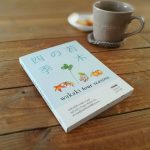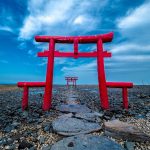The southern part of Saga Prefecture faces the Sea of Ariake. The seaweed from the sea is well known to be tasty. The sea has a favorable environment: it is a muddy wetland; it is rich in the various kinds of nutrients; the difference in the sea level between high tide and low tide is as stark as 6 meters; and it has a unique ecological system in which some unique species thrive. The seaweed and other seafood nurtured here develop a genuinely exceptional taste you cannot find anywhere else.


The seaweed produced in Saga Prefecture has nationwide recognition as the“Saga Nori (seaweed)” brand. It is known for being tasty, high quality and furnished in abundance, making it one of the top brands in Japan. The seaweed tastes excellent as it is but is also made into other products. A recent collaboration with major food producer Calbee is a case in point. After working with the company on a project to produce 47 different local brands of potato chips using local ingredients from 47 prefectures, Saga Nori potato chips made headway into the market. This writer has tried them, and they were delicious with the intense flavor of Saga Nori.

Did you know that the local people are so proud of Saga Nori that they even have nori sommeliers? Sommelier is a French word usually meaning wine expert, whose job includes tasting, sorting out, and recommending suitable wines for diners. By extension, now in Japan we have, for example, vegetable sommeliers. They are vegetable experts who sort out vegetables and offer the general public advice on vegetable use and cooking.
Now back to nori sommeliers in Saga. If you are interested, you can try a certification exam which is overseen by the Saga Prefecture Fishermen Cooperative. Would you like to know what it is like? Exam questions include the following: Try three different sheets of nori and rank their qualities; Try three different cups of water and distinguish their tastes; and Among each subtly flavored pool, tell the examiner if it is sweet, bitter, or tastes otherwise. Sound easy?
If you dare try, you will realize it is more difficult than you think.


How do we know if it is tasty or not when it comes to nori? The color could be a clue. The texture is also important. High–quality nori feels dry and crispy yet melts smoothly in the mouth. As you enjoy nori, you will realize that evaluating the quality of nori requires a lot of knowledge and experience.
The best quality nori is sold as “Ariake-kai Ichiban” (「有明海一番」), at 1,500 yen for five large-size sheets. That means it costs 300 yen per sheet, roughly equal to 100 Thai baht. Some top sushi bars offer Ariake-kai Ichiban to customers. Compared to high-end products, lower-rank nori are maybe less crispy, and less smooth in the mouth. However, they are less pricey; you can get ten sheets of reasonably good and tasty nori for 500-600 yen for 10 sheets.
If you would like to enjoy the subtle difference in taste among the various kinds of nori,
check the package and make sure it says Saga Nori (「佐賀海苔」). Try various kinds of nori of different tastes and prices. Be your own nori sommelier.
Once you open a bag of nori, make sure to close the bag at the top to keep it dry when there is some left-over. Zipper bags are always preferable. Follow the package instructions and keep it dry, and enjoy it while it is good and dry. Nori loses its crispness and flavor if overexposed to humidity or air. To restore the crispness of nori, roast it lightly over a fire.
Photo: Saga Prefectural Tourism Federation

Author name: Noi
Hometown: Bangkok, Thailand
I live in Wakaki-cho, Takeo City, Saga Prefecture, together with my Japanese husband, raising our child.
In Thailand, I used to do art and publication-related work.
I have a Kyushu Special Zone Guide-interpreter’s license (in Thai).

 TH
TH KR
KR JP
JP

